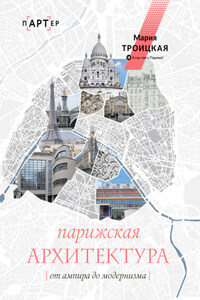© Confidential Concepts, worldwide, USA
© Parkstone Press International, New York, USA
© The Josef and Anni Albers Foundation, Artists Rights Society, New York, USA/ VG Bild-Kunst, Bonn
© Alfred Arndt, Artists Rights Society, New York, USA/ VG Bild-Kunst, Bonn
© Gertrud Arndt, Artists Rights Society, New York, USA/ VG Bild-Kunst, Bonn
© Theo Ballmer, all rights reserved
© Klaus Barthelmess, all rights reserved
© Rudolf Baschant, all rights reserved
© Eugen Batz, Artists Rights Society, New York, USA/ VG Bild-Kunst, Bonn
© Herbert Bayer, Artists Rights Society, New York, USA/ VG Bild-Kunst, Bonn
© Irene Bayer, all rights reserved
© Johannes Berthold, all rights reserved
© Marianne Brandt, Artists Rights Society, New York, USA/ VG Bild-Kunst, Bonn
© Marcel Breuer, all rights reserved
© Theodor Bogler, all rights reserved
© Paul Citroën, Artists Rights Society, New York, USA/ VG Bild-Kunst, Bonn
© Edmund Collein, all rights reserved
© Dr. Stephan Consemüller
© Martin Decker, all rights reserved
© Walter Determann, all rights reserved
© Friedl Dicker, all rights reserved
© Otto Dorfner: Frau Dorfner Erbs
© Franz Ehrlich, all rights reserved
© Hugo Erfurt, Artists Rights Society, New York, USA/ VG Bild-Kunst, Bonn
© Friedrich Engemann, all rights reserved
© Lyonel Feininger, Artists Rights Society, New York, USA/ VG Bild-Kunst, Bonn
© Lux Feininger, all rights reserved
© Carl Fieger, all rights reserved
© Hermann Fischer, all rights reserved
© Walter Funkat, all rights reserved
© Walter Gropius, Artists Rights Society, New York, USA/ VG Bild-Kunst, Bonn
© Josef Hartwig, Artists Rights Society, New York, USA/ VG Bild-Kunst, Bonn
© Fritz Heinze, all rights reserved
© Toni Hergt, all rights reserved
© Wilhelm Heß, all rights reserved
© Ludwig Hirschfeld-Mack, all rights reserved
© Karl Hermann Haupt, all rights reserved
© Charlotte Schultze-Marovsky, all rights reserved
© Adolf Hofmeister, all rights reserved
© Johannes Itten, Artists Rights Society, New York, USA/ VG Bild-Kunst, Bonn
© Hedwig Jungnik, all rights reserved
© Wassily Kandinsky Estate, Artists Rights Society, New York, USA/ ADAGP, Paris
© Peter Keler, all rights reserved
© Paul Klee, Artists Rights Society, New York, USA/ VG Bild-Kunst, Bonn
© Heiner Knaub, all rights reserved
© Kurt Kranz, all rights reserved
© Max Krehan, all rights reserved
© Max Krajewski, all rights reserved
© Benita Koch-Otte, all rights reserved
© Walter Köppe, all rights reserved
© Felix Kube, all rights reserved
© Werner Kubsch, all rights reserved
© Magda Langenstraß-Uhlig, Artists Rights Society, New York, USA/ VG Bild-Kunst, Bonn
© Otto Lindig: Prof. Ingrid Conrad-Lindig
© Margaret Lowe
© Rudolf Lutz, all rights reserved
© Arnulf Lutz, all rights reserved
© Gerhard-Marcks-Stiftung, Bremen
© Adolf Meyer, all rights reserved
© Hannes Meyer, all rights reserved
© Ludwig Mies van der Rohe, Artists Rights Society, New York, USA/ VG Bild-Kunst, Bonn
© László Moholy-Nagy, Artists Rights Society, New York, USA/ VG Bild-Kunst, Bonn
© Lucia Moholy, Artists Rights Society, New York, USA/ VG Bild-Kunst, Bonn
© Farkas Molnár, all rights reserved
© Georg Muche, all rights reserved
© Theobald Emil Müller-Hummel, all rights reserved
© Pius Pahl, all rights reserved
© Gyula Pap, Artists Rights Society, New York, USA/ VG Bild-Kunst, Bonn
© Walter Peterhans, all rights reserved
© Josef Pohl, all rights reserved
© Konrad Püschel, all rights reserved
© Margaretha Reichardt, all rights reserved
© Otto Rittweger, all rights reserved
© Agnes Roghé, all rights reserved
© Karl Peter Röhl, all rights reserved
© Hajo Rose, Artists Rights Society, New York, USA/ VG Bild-Kunst, Bonn
© Reinhold Rossig, all rights reserved
© Xanti Schawinsky, all rights reserved
© The Scheper Estate, Berlin
© Joost Schmidt, Artists Rights Society, New York, USA/ VG Bild-Kunst, Bonn
© Kurt Schmidt, all rights reserved
© Eberhard Schrammen, all rights reserved
© Lothar Schreyer, all rights reserved
© Herbert Schürmann, all rights reserved
© Alma Siedhoff-Buscher, Artists Rights Society, New York, USA/ VG Bild-Kunst, Bonn
© Franz Singer, all rights reserved
© Franz Skala, all rights reserved
© Naum Slutzky, all rights reserved
© Irmgard Sörensen, all rights reserved
© Gunta Stölzl-Stadler, Artists Rights Society, New York, USA/ VG Bild-Kunst, Bonn
© Kurt Schwertfeger, all rights reserved
© Paula Stockmar, all rights reserved
© Wolfgang Tümpel, all rights reserved
© Henry van de Velde, all rights reserved
© Reingardt Voigt, all rights reserved
© Lis Volger, all rights reserved
© Nikolai Wassiljew all rights reserved
© Wilhelm Wagenfeld, Artists Rights Society, New York, USA/ VG Bild-Kunst, Bonn
© Max Pfeiffer Wattenphul, all rights reserved
© Vincent Weber, all rights reserved
© Hanz Wittwer, all rights reserved
© Anni Wottiz, all rights reserved
© Iwao Yamawaki, all rights reserved
© Archiv und Familiennachlass Oskar Schlemmer, IT – 28824 Oggebbio (VB)
© Bühnen-Archiv Oskar Schlemmer, Secretariat, IT – 28824 Oggebbio (VB), www.schlemmer.org
© Photoarchiv C. Raman Schlemmer, IT-28824 Oggebbio (VB)








